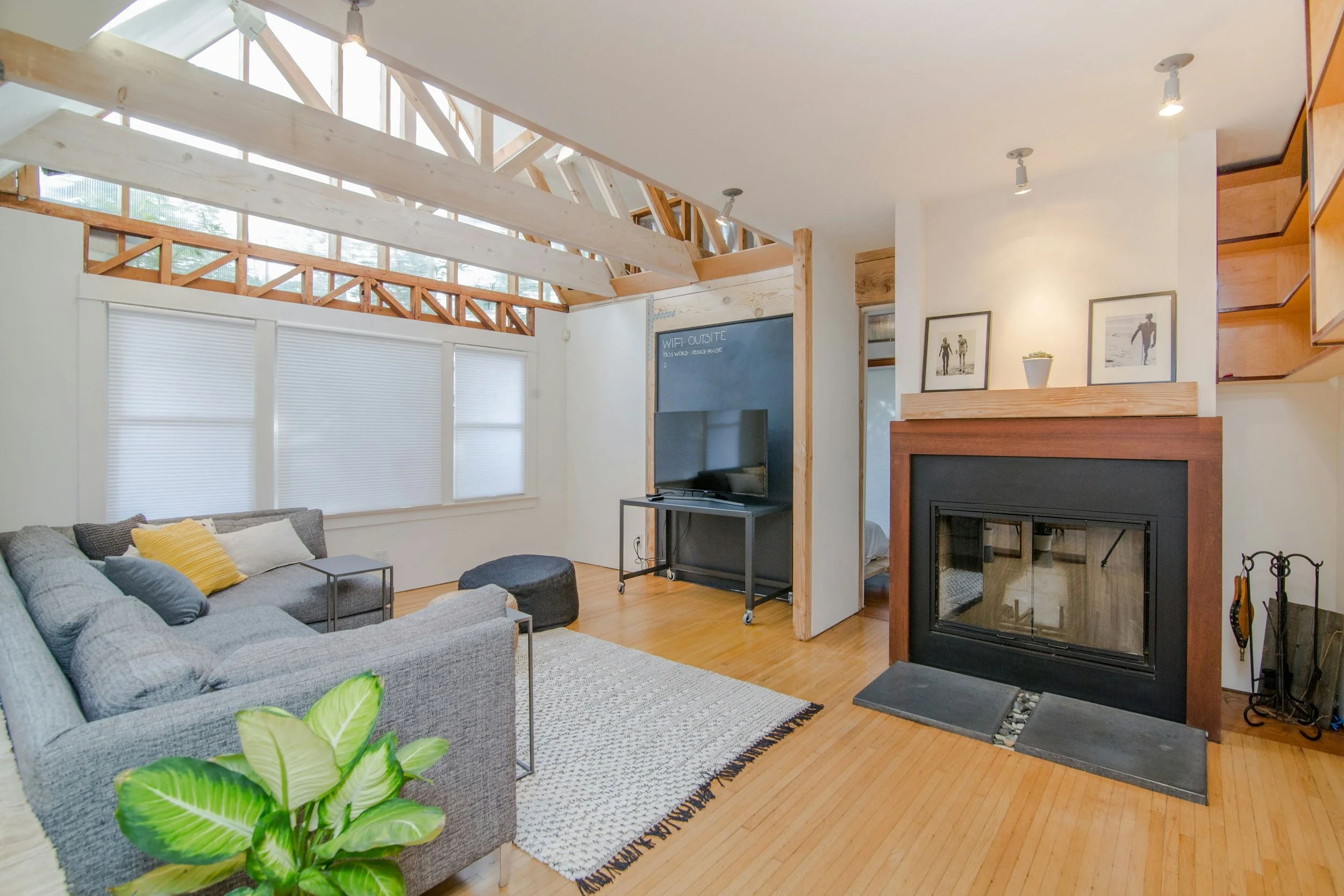 Image 1 of 1
Image 1 of 1


Intermediate Service
An intermediate home maintenance plan goes beyond the basic routine upkeep (like cleaning and changing filters) and begins to incorporate more involved tasks that might require some basic DIY skills and perhaps a few specialized tools or the assistance of professionals. This level of maintenance focuses on proactive measures to extend the lifespan of systems and components, prevent costly repairs, and address issues that might be less obvious than a dripping faucet.
Here's a breakdown of what an intermediate home maintenance plan should cover:
1. Seasonal inspections and adjustments
Spring:
Inspect roof and gutters for damage or debris accumulated during winter.
Clean gutters and downspouts.
Inspect and maintain the air conditioning system, potentially including professional servicing.
Repair or replace damaged caulking and weatherstripping around windows and doors to improve efficiency.
Check for signs of pests (termites, rodents, etc.) and address any identified entry points.
Summer:
Deep clean the refrigerator and freezer coils to maintain efficiency.
Inspect the dryer vent for lint buildup and clean it to prevent fire hazards.
Check for pooling water or excessive moisture in the yard, potentially indicating drainage issues.
Perform deck and patio cleaning and minor repairs.
Fall:
Prepare the heating system for cooler weather, including professional checks and replacing filters.
Inspect and potentially clean the chimney and fireplace before use.
Disconnect and drain outdoor hoses and winterize exterior plumbing to prevent freezing.
Check windows and doors for drafts and address any leaks with caulking or weatherstripping.
Organize and clean out the garage or shed.
Winter:
Monitor the basement or attic for leaks, especially during thaws.
Ensure proper ventilation throughout the home to prevent moisture buildup.
Check and add insulation where needed, especially in areas prone to drafts.
Ensure proper fuel storage and safe use of heating appliances.
2. System and appliance maintenance
HVAC: Regularly change or clean air filters (monthly or as recommended) and schedule professional checkups annually.
Plumbing: Inspect pipes, fixtures, and appliances for leaks, corrosion, or damage. Regularly clean slow-running drains and address minor issues promptly. Consider flushing the water heater annually to remove sediment.
Electrical: Test ground fault circuit interrupters (GFCIs) and smoke/carbon monoxide detectors regularly. Check electrical cords for wear and ensure proper grounding of appliances and systems.
Appliances: Clean refrigerator coils, check the dishwasher for leaks, clean the kitchen exhaust fan filter, and perform other routine maintenance as recommended by manufacturers.
3. General upkeep and repairs
Interior: Address minor drywall repairs, touch up paint, clean and seal tile grout, inspect and repair caulking in wet areas.
Exterior: Maintain landscaping, trim trees and shrubs away from the house, inspect siding for damage, mend cracks in driveways and walkways, and potentially power wash surfaces as needed.
Safety: Ensure fire extinguishers are charged and accessible, practice fire escape plans, and verify alarm systems are functioning properly.
An intermediate home maintenance plan goes beyond the basic routine upkeep (like cleaning and changing filters) and begins to incorporate more involved tasks that might require some basic DIY skills and perhaps a few specialized tools or the assistance of professionals. This level of maintenance focuses on proactive measures to extend the lifespan of systems and components, prevent costly repairs, and address issues that might be less obvious than a dripping faucet.
Here's a breakdown of what an intermediate home maintenance plan should cover:
1. Seasonal inspections and adjustments
Spring:
Inspect roof and gutters for damage or debris accumulated during winter.
Clean gutters and downspouts.
Inspect and maintain the air conditioning system, potentially including professional servicing.
Repair or replace damaged caulking and weatherstripping around windows and doors to improve efficiency.
Check for signs of pests (termites, rodents, etc.) and address any identified entry points.
Summer:
Deep clean the refrigerator and freezer coils to maintain efficiency.
Inspect the dryer vent for lint buildup and clean it to prevent fire hazards.
Check for pooling water or excessive moisture in the yard, potentially indicating drainage issues.
Perform deck and patio cleaning and minor repairs.
Fall:
Prepare the heating system for cooler weather, including professional checks and replacing filters.
Inspect and potentially clean the chimney and fireplace before use.
Disconnect and drain outdoor hoses and winterize exterior plumbing to prevent freezing.
Check windows and doors for drafts and address any leaks with caulking or weatherstripping.
Organize and clean out the garage or shed.
Winter:
Monitor the basement or attic for leaks, especially during thaws.
Ensure proper ventilation throughout the home to prevent moisture buildup.
Check and add insulation where needed, especially in areas prone to drafts.
Ensure proper fuel storage and safe use of heating appliances.
2. System and appliance maintenance
HVAC: Regularly change or clean air filters (monthly or as recommended) and schedule professional checkups annually.
Plumbing: Inspect pipes, fixtures, and appliances for leaks, corrosion, or damage. Regularly clean slow-running drains and address minor issues promptly. Consider flushing the water heater annually to remove sediment.
Electrical: Test ground fault circuit interrupters (GFCIs) and smoke/carbon monoxide detectors regularly. Check electrical cords for wear and ensure proper grounding of appliances and systems.
Appliances: Clean refrigerator coils, check the dishwasher for leaks, clean the kitchen exhaust fan filter, and perform other routine maintenance as recommended by manufacturers.
3. General upkeep and repairs
Interior: Address minor drywall repairs, touch up paint, clean and seal tile grout, inspect and repair caulking in wet areas.
Exterior: Maintain landscaping, trim trees and shrubs away from the house, inspect siding for damage, mend cracks in driveways and walkways, and potentially power wash surfaces as needed.
Safety: Ensure fire extinguishers are charged and accessible, practice fire escape plans, and verify alarm systems are functioning properly.